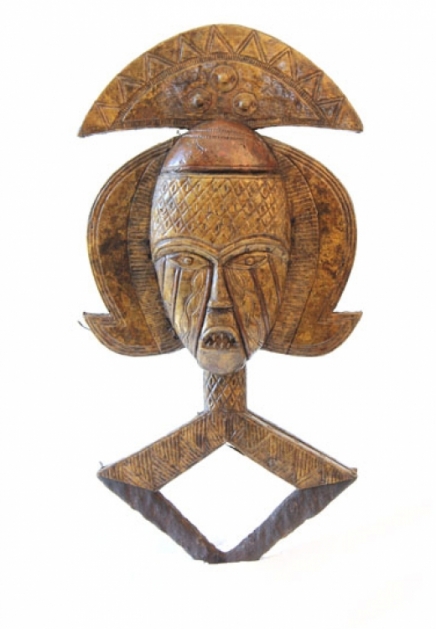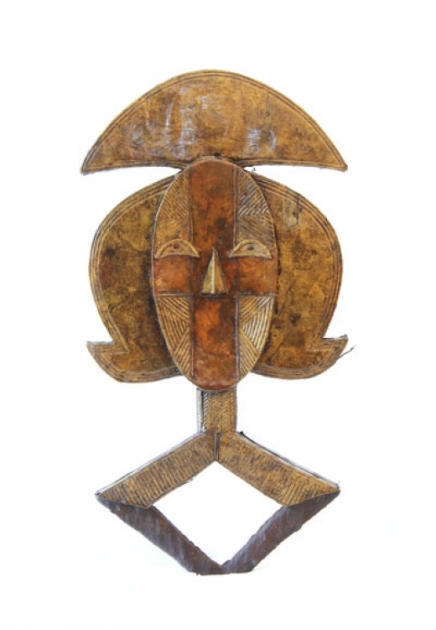Janus-faced Reliquary
These dual Mbulu Viti Kota figures were guardians of the relics of honorable ancestors, positioned above and attached to a reliquary basket (containing skulls or bones). According to L. Perrois, Janus-faced representations are not unusual in Kota art, particularly among the Ndassa and Wumbu of the north-western Congo. But the significance of the double-face remains an enigma. E. Andersson has suggested that such double Mbulu Viti were the earliest and most powerful of the southern Kota guardian figures. Citing local sources, he has identified the concave half as female and the convex one as male. But it appears that Janus-faced figures related more to ritual, magical and religious efficacy than to any distinction between sexes. They were invoked in times of distress, such as the death of a leader, sickness, danger or hunger. They were used to request for the benevolent protection of the ancestors to assure the well-being of the community, happiness, fertility and success. Janus Mbulu Viti were considered especially effective for their ability to anticipate danger from any direction. In addition, they were believed to be capable of consuming two different kinds of offerings simultaneously. The opposing faces are contrasted in every way. The convex face has a heightened realistic presence, with rich décor conveying an intensely fierce expression. The concave face has a highly abstracted visage, lacking a mouth, and with minimal decoration, conveying a calm expression.
L. Perrois, Tribal Sculpture, Thames & Hudson, 1995, p.148; E. Andersson, 1974, pp. 163,165 cf. in A. LaGamma, Eternal Ancestors, 2007, pp. 252, 258.


